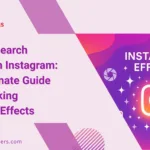Google Ranking Factors 2025 reshape how pages are ranked, so you must understand the signals that matter most. By focusing on content quality, linking domain variety, and page experience elements, you can build a sustainable SEO strategy that grows traffic over time. This guide explains what to optimize, how to measure progress, and where to start today.
Understanding the Core Google Ranking Factors 2025
At its core, the search engine evaluates intent, value, and experience. While the exact algorithms are proprietary, the public signals sit in clear groups. First is content quality, which includes originality, depth, accuracy, and relevance to user intent. Second, domain authority and link variety show how trusted a site is across the web. Third, page experience signals speed, accessibility, and safety determine how users perceive and interact with a page. Together, these factors form a practical framework for optimization, rather than a mystery to chase with gimmicks.
Content Quality: The Foundation of Rankings
Quality content is not merely well written. It is thoroughly aligned with what the user wants, answers the questions posed by search intent, and provides unique value that cant be found elsewhere. In practice, you should focus on:
- Providing in-depth explanations that cover the topic from multiple angles.
- Using credible data and clear sources to back claims.
- Writing with clarity and structure so readers can skim and absorb quickly.
- Addressing long-tail queries that indicate intent to act, compare, or decide.
Content quality also ties to EAT expertise, authoritativeness, and trust. Profiles, bios, author credentials, and transparent about pages build this perception. When you publish content that demonstrates expertise and accuracy, you increase the likelihood that Google will reward your pages with higher visibility.
Linking Domain Variety: Diverse Backlinks Matter
Link signals are still important in 2025, but the emphasis has shifted toward diverse, relevant domains rather than sheer quantity. A healthy backlink profile includes links from different domains, in-depth resource pages, and references from sites within or adjacent to your niche. Prioritize earning links from publishers, industry associations, and communities that align with your content goals.
Practical strategies include:
- Creating resource-worthy content that others naturally cite, such as data studies, benchmarks, or comprehensive guides.
- Engaging in guest contributions on reputable sites to broaden domain exposure.
- Building relationships with industry influencers who can reference your work.
- Utilizing broken-link building and updated references to create new value on older pages.
Remember, the quality of linking domains and their topical relevance often outweighs the number of total links. A few powerful, trustworthy domains can move the needle more than many low-quality links.
Page Experience: Core Web Vitals and Beyond
Page experience signals judge how users perceive the page during their visit. Core Web Vitals remain central, focusing on loading performance, interactivity, and visual stability. Beyond Core Web Vitals, you should ensure:
- Mobile-first design and responsive layouts so pages render well on all devices.
- Secure, HTTPS connections with valid certificates to protect user data.
- Clear site architecture so users and crawlers can discover content easily.
- Accessible content with text alternatives for media and proper semantic markup.
A fast, stable experience reduces pogo-sticking and increases engagement. When users stay longer and visit more pages per session, Google interprets that as satisfaction, which can positively impact rankings.
Technical SEO and Indexing: The Invisible But Critical Layer
Technical health ensures Google can crawl, index, and understand your pages. Focus areas include:
- Robust crawlability via clean robots.txt and well-structured sitemaps.
- Efficient site architecture with logical categories and internal linking.
- Proper canonicalization to prevent duplicate content issues.
- Regular indexing checks to ensure the latest content is discoverable.
Technical optimization supports every other signal. If the site is hard to crawl or understand, even high quality content may not reach the right audience.
EAT and Trust Signals: Building Credibility
Experience, Expertise, Authority, and Trust (EAT) remain essential. Google rewards pages that show credible authors, transparent sources, and verifiable claims. Practical implementations include:
- Detailed author bios with credentials and relevant experience.
- Clear, accurate references and citations to supporting data.
- Transparent about pages and contact information that establish trust.
- Consistent publication of high quality content to demonstrate ongoing expertise.
Strengthening EAT is not about a single tactic but a holistic approach to how you publish, cite, and prove value to your audience.
Practical Optimization Plan for Google Ranking Factors 2025
Turn theory into action with a structured plan. Use the following 7 steps to align with the latest ranking factors:
- Audit existing content for depth, updating outdated facts and expanding on key sections.
- Map content to user intent with clear questions and actionable takeaways.
- Fortify the backlink profile by targeting diverse domains in your niche.
- Improve page speed and interactivity, targeting Core Web Vitals improvements.
- Ensure mobile friendliness and an accessible design for all users.
- Strengthen technical SEO with clean navigation and proper indexing signals.
- Track progress with clear metrics and iterate based on data from analytics and search console.
Consistency matters. Small, steady improvements across content quality, linking strategy, and page experience compound over time, delivering sustainable gains in visibility and traffic.
Frequently Asked Questions
What are the most important ranking factors in 2025?
In 2025, content quality, linking domain variety, and page experience remain foundational. Technical health and EAT signals amplify their impact, especially for competitive topics.
How long does it take to see SEO results after changes?
Results vary, but many sites notice improvements within 4 to 12 weeks after implementing changes. Sustained progress depends on ongoing content quality, backlink diversification, and user experience improvements.
Do Core Web Vitals still affect rankings?
Yes, Core Web Vitals are a key part of page experience and influence rankings when combined with other signals. Optimizing LCP, FID, and CLS helps user satisfaction and crawl efficiency.
Can high quality content rank without backlinks?
High quality content can rank, but backlinks from diverse domains significantly strengthen authority and trust, especially for competitive terms. A balanced strategy works best.
Conclusion
In short, Google Ranking Factors 2025 are best understood as a cohesive system that rewards content that is valuable, credible, and easy to use. By investing in content quality, cultivating linking domain variety, and delivering a superior page experience, you create a durable foundation for long term visibility. Combine these elements with solid technical SEO and ongoing EAT signals, and your site is well positioned to climb the SERPs in a sustainable, measurable way.








